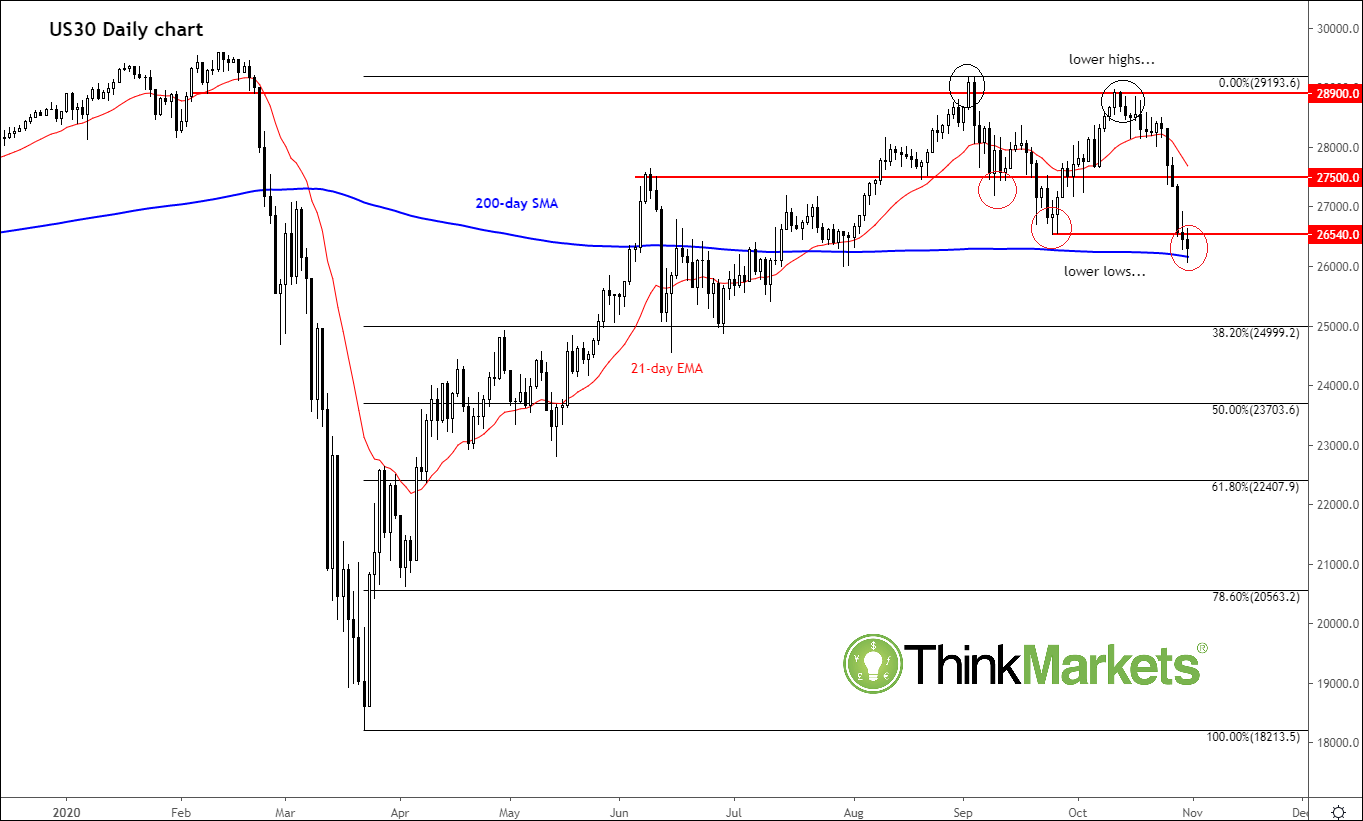It has been an ugly week for risky assets and with the weekend fast approaching, do not be surprised if we were to see further falls heading into the close on Friday (when this report was written). Sentiment towards stocks, crude oil and risk-sensitive currencies turned decisively negative owing to concerns about the pace of the economic recovery, after a rapid rise in new virus cases saw many European countries ramp up restrictions and France went into a lockdown. Meanwhile the delay in US stimulus talks added to the selling pressure. The US has also been dealing with a surge in coronavirus cases, and there are some concerns that if the world’s largest economy goes into some form of a lockdown, then the situation could get even uglier for risk assets. Oh, and there is the small matter of the presidential election uncertainty, too…
Look Ahead: 2020 Presidential Election
Indeed, the main macro event in the week ahead is without a doubt the US presidential election on Tuesday. Unquestionably, the outcome of this coming election will have consequences far beyond America’s borders. Another key risk is not just the outcome, rather the ballot counting could drag out the results for weeks.
With more than 66 million Americans having cast their votes early, the election is shaping up to be unlike any other, possibly resulting in a record turnout. This may be a sign of heightened voter enthusiasm as we inch closer to polling day on Nov. 3, with Donald Trump trailing behind his Democratic challenger Jo Biden in the national opinion polls.
In 2016, many analysts had predicted that the stock markets would crash in case of a Trump victory. But they rallied instead, not least because of Trump’s corporate tax incentives. What will the 2020 election deliver? Will shares of tech companies decline with a Biden victory? Are investors scared by his tax policies? Would a Trump win drag down clean energy shares, and would the trade war with China escalate? Are we heading for a contested result, just like in 2000? And which party will dominate the Senate and the House of Representatives?
With so many possible scenarios, it is really difficult to predict what the markets would look like in the second half of the week. But judging by the price action this week, I would think the start of next week could be another bad one for risk assets. Investors will still be concerned about the fallout from the second wave of the virus and with the election result not out until at least Wednesday, there will be little incentive for market participants to pile back into stocks, I would think. There is also concerns about the technology stocks which took a beating on Friday, following ill-received earnings results from the tech giants on Thursday night. The fact that some of these tech leaders raised concern about the outlook for the sector will not go unnoticed by forward-looking financial markets. Investors have until now been piling into growth stocks but going forward some will undoubtedly think twice about investing in these markets without first witnessing a sizeable correction. So, there is a possibility that the sector may extend its correction further, as froth is removed from some of technology names which have disproportionately surged higher since lockdown in March.
By the way, you may wish to register for our
live pre-election webinar Tuesday, Nov. 3, where I will join my other global market analyst colleagues to discuss key markets, scenarios, and levels that we will be watching. To see our full webinar schedule, including a Non-farm Payroll webinar,
click here.
Central bank meetings and NFP other major events
In the week ahead, as well as the S election, we will have plenty of macroeconomic data and three major central bank meetings to look forward to.
Friday: US nonfarm payrolls and Canadian jobs reports
Featured chart: Dow Jones
Unlike the S&P 500 and the Nasdaq, the Dow has not created a new record high above its pre-lockdown high. Thus, it is leading the indices lower. It has also created a few lower lows. If the 200-day moving average does not hold, then look out below:

Source: ThinkMarkets and TradingView.com